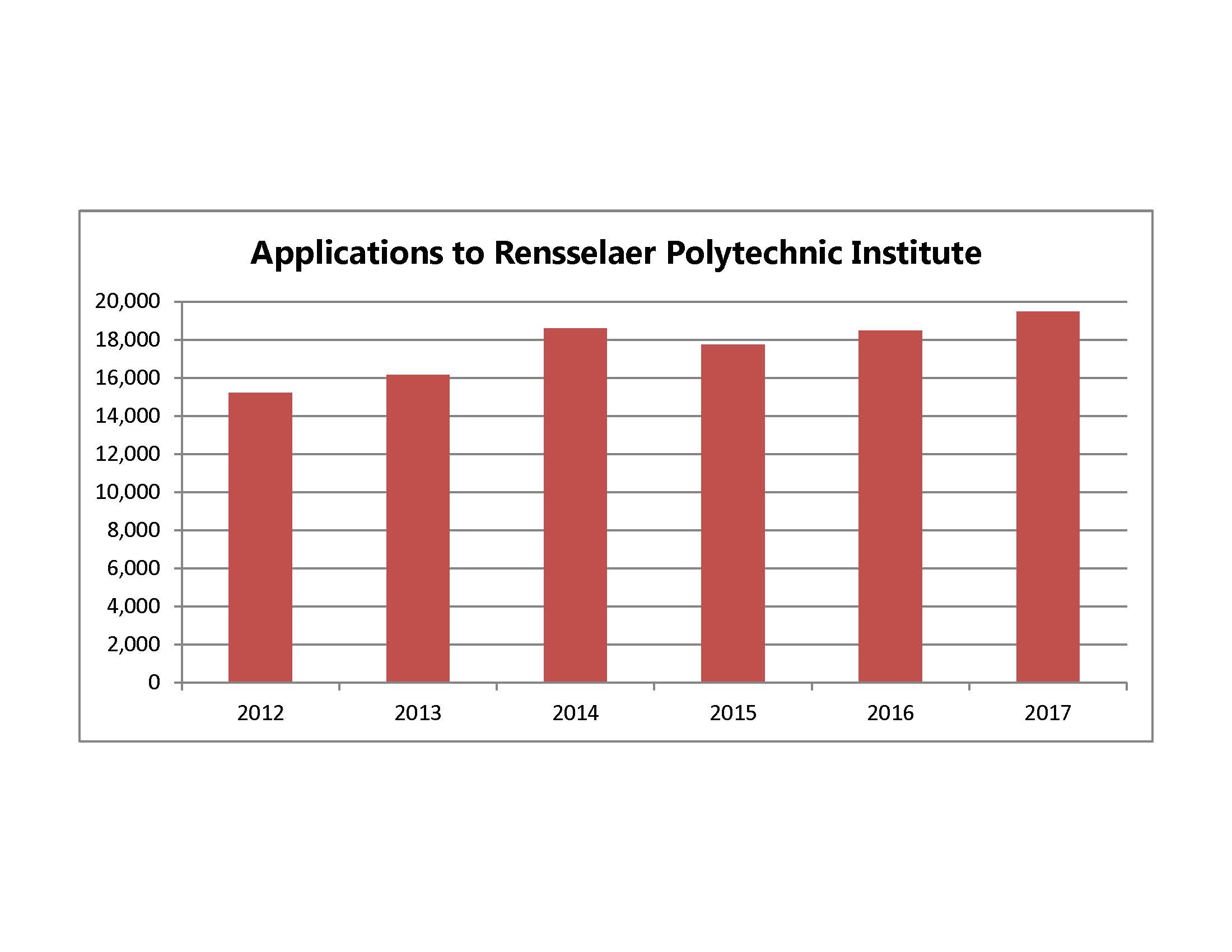
Rensselaer received the highest number of total applications in its history for the Class of 2021—a total of 19,485 applications, 1,018 more than last year—according to Rensselaer’s Office of Admissions. This represents a total increase of 5 percent from last year at this time, and an increase of over 28 percent over the past five years.
“This is the largest number of applications for one year that Rensselaer has ever received,” said Jonathan Wexler, Vice President for Enrollment Management. “Last year, Rensselaer received 18,467 applications.”
Admissions statistics so far represent a diverse student community. In addition to increases in total applications this year, Rensselaer’s applicant pool also experienced a significant increase in the the total number of applications from women, international, and underrepresented minority students. Legacy applicants, who have a parent or sibling that attended Rensselaer, also made up a greater portion of the applicant pool than prior years according to the Office of Admissions.
Over 51 percent of all applications were also received from outside the Northeast region, with significant growth in interest specifically from California, Virginia, Florida, Texas, and Washington. In 2016, 29 percent of all Rensselaer students were from New York, 31 percent were from the rest of the Northeast, with 19 percent of all students from New England, 23 percent were from outside the Northeast, and 17 percent were from outside the United States.
“Here on campus, we know that Rensselaer has historically been a top producer of future leaders and innovators, so it is very encouraging to see external evidence that more and more students value the high-quality academic and co-curricular programs that we offer,” Wexler said.
Last year, Rensselaer enrolled the largest graduating class in its history, with over 1,690 incoming freshmen last fall. The increased class size was the result of many factors, including greater student demand for a Rensselaer education, greater number of accepted applicants, and the largest financial aid budget in Rensselaer’s history.
Of nearly 2,500 students accepting their place on the waitlist for the Class of 2020, only four students were admitted, for a waitlist acceptance rate of less than 0.2 percent. The overall acceptance rate, however, reached a five-year high of 44.3 percent. During this same period, the lowest acceptance rate was 37.5 percent for the Class of 2018. The increased acceptance rate for the Class of 2020 was due to Rensselaer also admitting the largest number of students in its history.
Rensselaer’s mean SAT score has also declined nearly one percent since 2014, falling 11 points in 2016 to 1370 from a peak of 1381 in 2014. In addition, although the number of undergraduate students has risen significantly over the past five years, the number of full and part time graduate students has declined by over 25 percent, from 1,561 in 2012 to 1,168 in 2016. During this same time frame, the number of undergraduates has risen by nearly 17 percent, from 5,300 to 6,200, corresponding with increases in the number of admitted undergraduate students. The size of Rensselaer’s student body, additionally, rose by over six percent.
According to the 2016–2017 Common Data Set, the Rensselaer student to faculty ratio declined to its lowest level in the past decade, falling from 15 to 1 in 2015 to 13 to 1 in 2016. During this same time frame, the number of faculty holding the highest degree in their field also rose to over 90 percent. Faculty resources account for 20 percent of the US News & World Report ranking index, and are an important determination in the Institute’s rankings, even more so than admissions selectivity, which accounts for 12.5 percent. Increases in faculty can also impact other areas of the ranking index, including undergraduate academic reputation which accounts for an additional 22.5 percent of the ranking index. Rensselaer was ranked 39th among all national universities in the 2016-2017 US News & World Report.
Acceptance rate data for the Class of 2021 is not currently public, but assuming a class size similar to last year’s of roughly 1,650 as well as a similar yield rate, The Poly estimates the acceptance rate for the Class of 2021 was between 39 and 41 percent with a margin of error of one percent for the range. For a slightly smaller class of 1,500 anticipated students, the acceptance rate was between 36 and 38 percent, with roughly the same margin of error.
